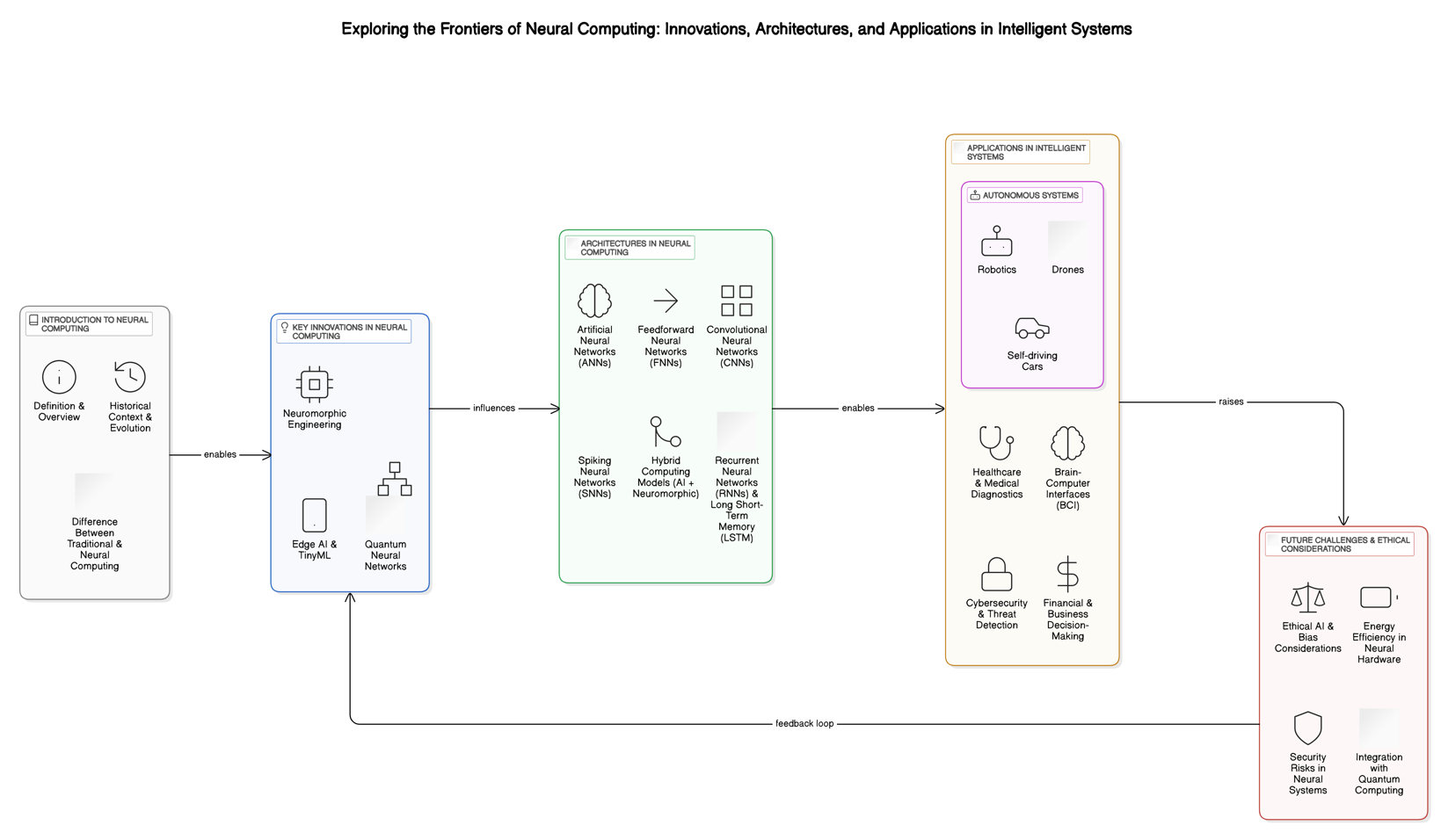Abstract
Neural computing, as an influential factor of artificial intelligence, is an industry that has managed to achieve an extensive array of innovations. This paper presents an overview of the recent advancements in the field of neural computing, which are focused on state-of-the-art architectures, novel computational paradigms, and their applications in intelligent systems. The paper traces the development of neural networks, from the original artificial neural network (ANN) through deep learning models and on to neuromorphic computing. In other words, the main points of emphasis are breakthroughs in hardware acceleration, hybrid models, and bio-inspired computing, which are responsible for intelligent systems moving to the next generation. This paper also sheds light on how neural computing is ushering in innovations in healthcare, autonomous vehicles, and natural language processing indicating its capacity to influence the decision-making and automation process. It also considers issues related to scalability, interpretability, and ethical issues of neural computing. The goal of the paper is to illustrate the future course of neural computing and its role in advancing AI-driven technologies via an in-depth presentation of the above fields.
Data Availability Statement
Data will be made available on request.
Funding
This work was supported without any funding.
Conflicts of Interest
The authors declare no conflicts of interest.
Ethical Approval and Consent to Participate
Not applicable.
Cite This Article
APA Style
Rehman, A., & Ahmad, M. (2025). Exploring the Frontiers of Neural Computing: Innovations, Architectures, and Applications in Intelligent Systems. IECE Transactions on Neural Computing, 1(2), 65–77. https://doi.org/10.62762/TNC.2025.168636
Publisher's Note
IECE stays neutral with regard to jurisdictional claims in published maps and institutional affiliations.
Rights and permissions

Copyright © 2025 by the Author(s). Published by Institute of Emerging and Computer Engineers. This article is an open access article distributed under the terms and conditions of the Creative Commons Attribution (CC BY) license (
https://creativecommons.org/licenses/by/4.0/), which permits use, sharing, adaptation, distribution and reproduction in any medium or format, as long as you give appropriate credit to the original author(s) and the source, provide a link to the Creative Commons licence, and indicate if changes were made.


 Submit Manuscript
Edit a Special Issue
Submit Manuscript
Edit a Special Issue

 Copyright © 2025 by the Author(s). Published by Institute of Emerging and Computer Engineers. This article is an open access article distributed under the terms and conditions of the Creative Commons Attribution (CC BY) license (https://creativecommons.org/licenses/by/4.0/), which permits use, sharing, adaptation, distribution and reproduction in any medium or format, as long as you give appropriate credit to the original author(s) and the source, provide a link to the Creative Commons licence, and indicate if changes were made.
Copyright © 2025 by the Author(s). Published by Institute of Emerging and Computer Engineers. This article is an open access article distributed under the terms and conditions of the Creative Commons Attribution (CC BY) license (https://creativecommons.org/licenses/by/4.0/), which permits use, sharing, adaptation, distribution and reproduction in any medium or format, as long as you give appropriate credit to the original author(s) and the source, provide a link to the Creative Commons licence, and indicate if changes were made. 